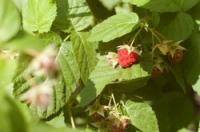Where do boletus grow?
Porcini mushrooms prefer to grow under pines, oaks, spruces or beeches. They are mycorrhizal fungi and partner with certain plants, especially trees. Ceps are therefore very easy to find if you know which locations they prefer. It is not only the tree species that are decisive, but also the nature of the soil and certain weather influences.

Locations for porcini mushrooms - important properties
Like other mushrooms, porcini mushrooms only grow in locations that meet certain basic requirements.
- Ceps are always tied to tree species with which they enter into a symbiosis. That is, porcini mushrooms are mycorrhizal fungi.
- They are found both individually and in groups in coniferous, mixed and deciduous forests.
- Ceps grow very often in the mountains, but they are also easy to find in the hills and plains.
- The time when porcini mushrooms grow is around June to October.
- As a rule, porcini mushrooms prefer not too dry and not too wet soils that are as acidic as possible. Persistent drought or days of rain are not favorable conditions for growth.
- Ceps grow very well on areas covered with moss or heather.
Collecting porcini mushrooms - you should pay attention to this
They don't grow on stones as the name might suggest. Porcini mushrooms ...
Spruce, oak or beech - where do stone mushrooms grow?
- The spruce stone mushroom, also known as the male mushroom, grows mainly on spruce trees in the mountains. In the lowlands, on the other hand, it is more likely to be found on oaks and beeches. But it is also sometimes seen under pines, birches, firs, chestnuts or linden trees.
- It grows both in the forest and on the edge of the forest. Spruce stone mushrooms sometimes grow in association with toadstools.
- The ideal conditions for the spruce stone mushroom are a slight drop in temperature with subsequent moisture. Rain after a warm summer is perfect for this.
And where do you find all the other porcini mushrooms?
- In addition to spruce stone mushrooms, there is also the bronze boletus, also known as the black-capped boletus. He prefers mixed forests with oak and beech, but also oak and hornbeam forests, in which the soil is not too wet. Dry to moist, loamy soils are perfect for these porcini mushrooms.
- The summer bolete or oak boletus also likes to grow in beeches and oaks, but also feels good in beech-fir forests. What he doesn't like is sandy soils.
- The pine stone mushroom, on the other hand, particularly likes to grow on sandy and dry soils. You can find it, as its name suggests, mainly at the feet of pine trees, rarely also spruce trees.
How helpful do you find this article?


